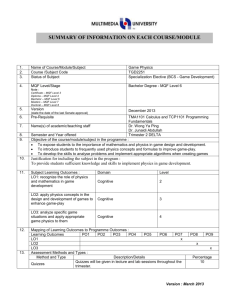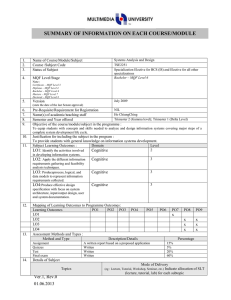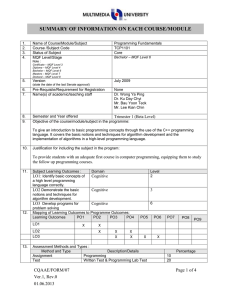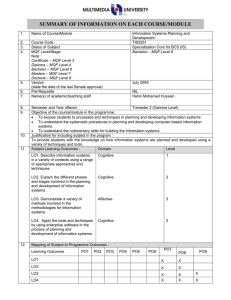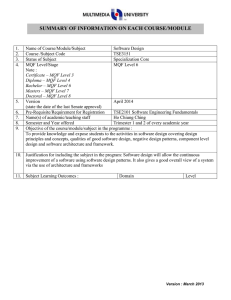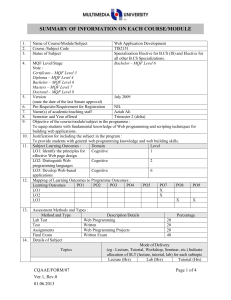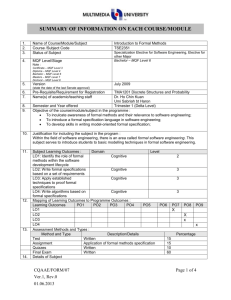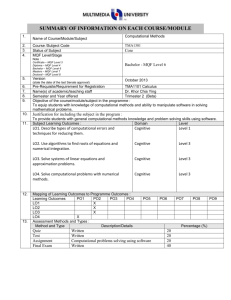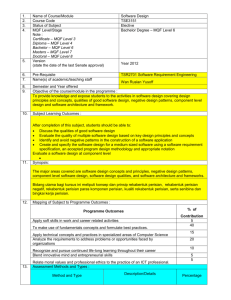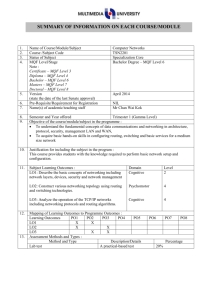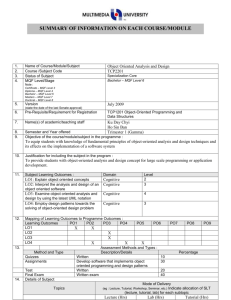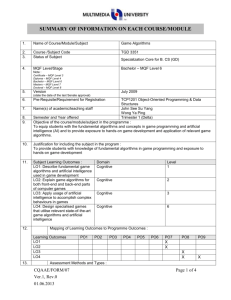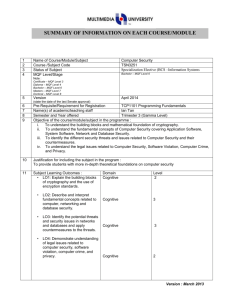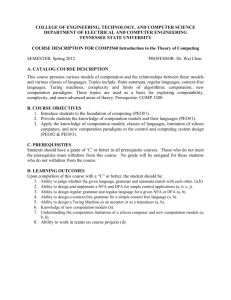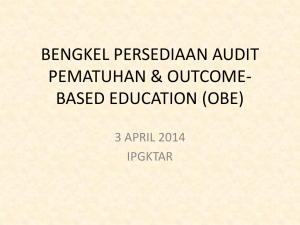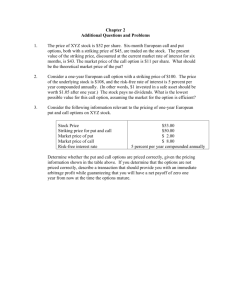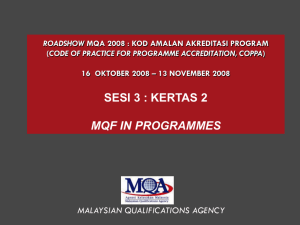Table 3: Summary of information on each course/module
advertisement
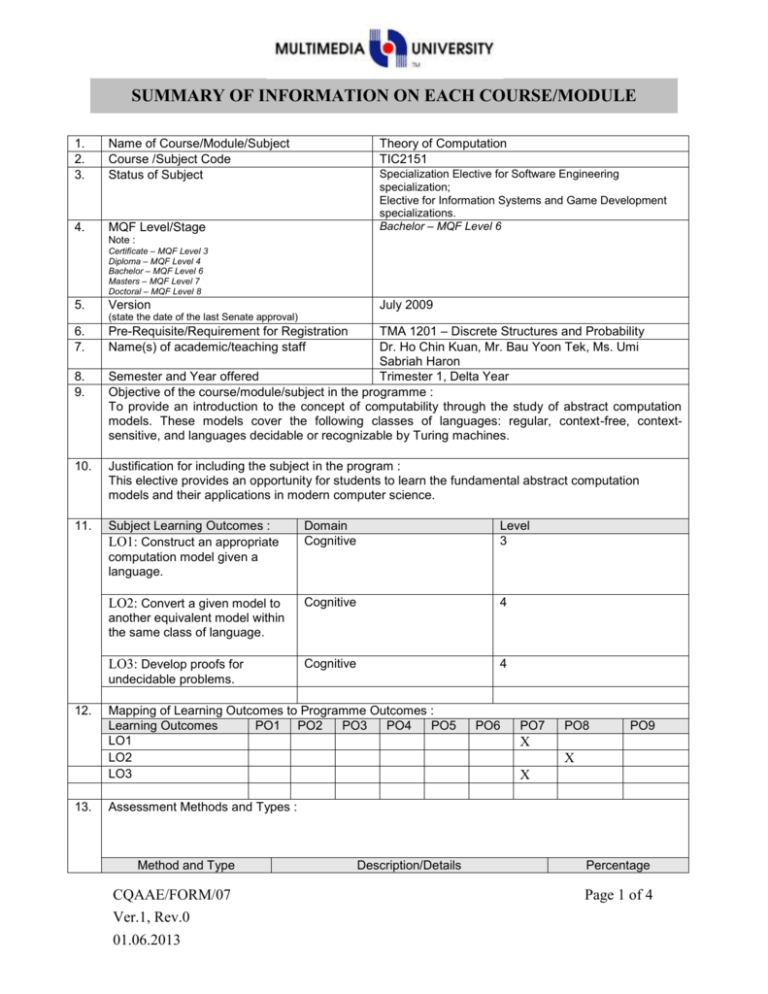
SUMMARY OF INFORMATION ON EACH COURSE/MODULE 1. 2. 3. Name of Course/Module/Subject Course /Subject Code Status of Subject 4. MQF Level/Stage Theory of Computation TIC2151 Specialization Elective for Software Engineering specialization; Elective for Information Systems and Game Development specializations. Bachelor – MQF Level 6 Note : Certificate – MQF Level 3 Diploma – MQF Level 4 Bachelor – MQF Level 6 Masters – MQF Level 7 Doctoral – MQF Level 8 5. Version July 2009 (state the date of the last Senate approval) 6. 7. 8. 9. TMA 1201 – Discrete Structures and Probability Dr. Ho Chin Kuan, Mr. Bau Yoon Tek, Ms. Umi Sabriah Haron Semester and Year offered Trimester 1, Delta Year Objective of the course/module/subject in the programme : To provide an introduction to the concept of computability through the study of abstract computation models. These models cover the following classes of languages: regular, context-free, contextsensitive, and languages decidable or recognizable by Turing machines. Pre-Requisite/Requirement for Registration Name(s) of academic/teaching staff 10. Justification for including the subject in the program : This elective provides an opportunity for students to learn the fundamental abstract computation models and their applications in modern computer science. 11. Subject Learning Outcomes : LO1: Construct an appropriate computation model given a language. Domain Cognitive Level 3 LO2: Convert a given model to Cognitive 4 Cognitive 4 another equivalent model within the same class of language. LO3: Develop proofs for undecidable problems. 12. 13. Mapping of Learning Outcomes to Programme Outcomes : Learning Outcomes PO1 PO2 PO3 PO4 PO5 LO1 LO2 LO3 PO6 PO7 PO8 PO9 X X X Assessment Methods and Types : Method and Type CQAAE/FORM/07 Ver.1, Rev.0 01.06.2013 Description/Details Percentage Page 1 of 4 14. Quizzes Assignment Test Final Exam Details of Subject Written quizzes. The assignment will involve programming. Written test - may be open-book. Written exam. 10 15 15 60 Mode of Delivery Indicate allocation of SLT (lecture, tutorial, lab) for each subtopic (eg : Lecture, Tutorial, Workshop, Seminar, etc.) Topics Lecture (Hrs) 2 Lab (Hrs) Tutorial (Hrs) 2 1. Mathematical background Set theory; Functions and relations; Types of proofs. 15. 2. Finite Automata (FA) Deterministic FA (DFA); Non-Deterministic FA (NFA); FA with epsilon transitions (epsilon-NFA); Regular Expressions (RE); Converting NFA to DFA; Converting epsilon-NFA to NFA; Converting RE to epsilon-NFA; Minimisation. 6 6 3. Properties of regular languages Pumping lemma for regular languages; Closure properties. 2 2 4. Context-Free Grammars (CFGs) Derivations and parse trees; Ambiguity in CFGs. 4 2 5. Pushdown Automata (PDA) Deterrministic PDA; Acceptance by final state; Acceptance by empty stack; From grammars to PDA. 4 4 6. Properties of Context-Free Languages (CFLs) Chomsky normal form; Pumping lemma for context-free languages; Closure properties. 4 4 7. Turing machines (TMs) and undecidability Turing machines; Variants of Turing machines; Recursive and recursively enumerable languages; Church-Turing thesis; Halting problem. 6 6 28 28 Total Student Learning Time (SLT) CQAAE/FORM/07 Ver.1, Rev.0 01.06.2013 Face to Face Total Independent Learning Page 2 of 4 16. 17. Lecture Tutorials Laboratory/Practical Assignment Quizzes Tests Final Exam Sub Total Total SLT Credit Value Reading Materials : 28 28 28 28 1 2 18 5 5 20 Textbook Sipser, M. (2012). Introduction to the Theory of Computation (Third Edition). Cengage Learning. CQAAE/FORM/07 Ver.1, Rev.0 01.06.2013 160 4 Reference Materials Hopcroft, J. E., Motwani, R. & Ullman, J. D. (2007). Introduction to Automata Theory, Languages, and Computation. Third Edition. Addison-Wesley. Page 3 of 4 18. Appendix (to be compiled when submitting the complete syllabus for the programme) : 1. Mission and Vision of the University and Faculty 2. Programme Objectives or Programme Educational Objectives 3. Programme Outcomes (POs) 4. Mapping of POs to the 8 MQF domain 5. Mapping of Los to the POs 6. Summary of the Bloom’s Taxonomy’s Domain Coverage in all the Los in the format below : Bloom’s Taxonomy Domain Learning Outcomes Subject (please state the learning 0utcomes) ABC1234 Affective Cognitive Psychomotor Learning Outcome 1 Learning Outcome 2 Learning Outcome 3 Learning Outcome 4 7. Summary of LO to PO measurement 8. Measurement and Tabulation of result for LO achievement 9. Measurement Tabulation of result for PO achievement Mapping Learning Outcome to Assessment No. A1 Assessment A2 Assignment (15%) X A3 Test (15%) X X A4 Final Exam (60%) X X Quizzes (10%) CQAAE/FORM/07 Ver.1, Rev.0 01.06.2013 LO1 X LO2 LO3 X Page 4 of 4
